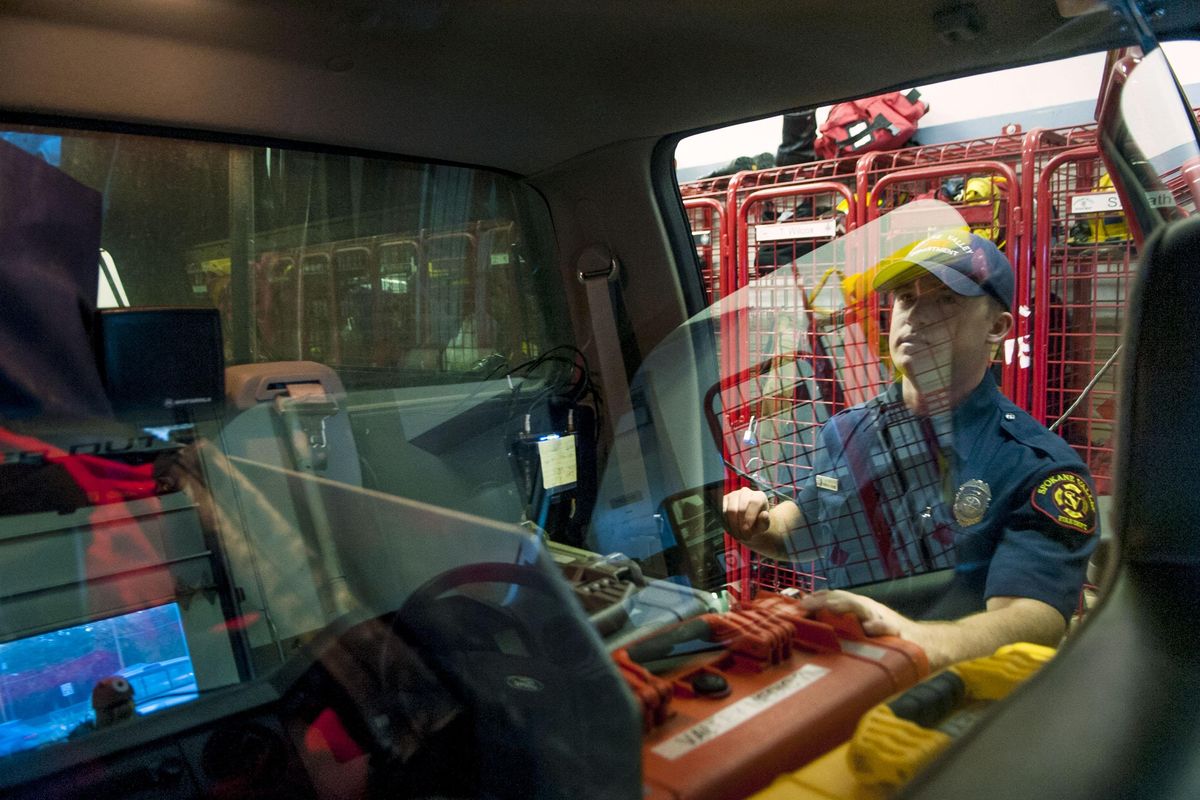Spokane Valley Fire makes Medic 7 – a two-man response unit – permanent

A successful pilot program last year has prompted the Spokane Valley Fire Department to permanently add an Alternative Response Unit to the department to respond to minor medical calls. A similar program is also in use by the Spokane Fire Department.
The two-man crew on Medic 7 responds to lower priority calls that do not require a full crew or firefighting equipment, such as minor illnesses or falls. The crew includes a paramedic and an EMT.
The crew travels the area served by the department in a pickup stuffed with medical equipment and supplies. A paramedic is included in the two-man crew because sometimes a call that seems minor can quickly develop into a life-threatening emergency, said Deputy Chief of Operations Shawn Arold.
The pilot project ran from April to September last year and the ARU responded to more than 660 medical calls. The department considered the cost per mile to operate the unit and whether it was effective in serving the public’s needs, Arold said.
It cost 40 cents per mile to operate the ARU during the pilot project, not including the start-up costs. It costs $2.31 per mile on average to operate a fire engine, Arold said.
Having the ARU means that fewer miles are put on the more-expensive-to- operate engines, which helps extend their operational lives. A new engine or ladder truck can easily top $1 million, and it’s much cheaper to repurpose a pickup or Suburban, he said.
Using the ARU can free up other crews for calls that present a greater threat to life or property. The department also was looking for a way to efficiently handle a larger number of calls, about 84 percent of which are requests for emergency medical services.
“Over the past five years we’ve had a 34 percent increase in call volume,” Arold said. “We’ll go over 18,000 calls for service this year. Each year is a new record for us.”
Medic 7 is staffed from 8 a.m. to 8 p.m. Monday through Friday because an analysis showed that to be the time when the most lower priority medical calls come in, Arold said. “We run it as a peak activity unit,” he said. “It helps with our overall responsiveness.”
Firefighters in the department work 24-hour shifts that begin at 8 a.m., so the crews on Medic 7 spend the first half of their shift on the ARU and finish their shift at their normal station, he said.
Firefighters volunteer for the duty and spend between three and six months on the ARU before rotating off. “Through the pilot program it was very popular with the folks who worked on that,” he said.
When the program was reactivated in mid-September that enthusiasm had not waned. “They were lining up to get back on the rig,” Arold said.
One of the reasons the firefighters like it is because they get to spend more time with people, Arold said. “They love to go and interact with the community,” he said.
During the pilot program the ARU operated out of Station 7 much like a normal engine, but then they started paying attention to the call hot spots. “They started positioning themselves out of the station,” he said. “We found that having the unit mobile was better.”
Medic 7 crews still start and end their shift at Station 7 but they spend their day patrolling the high-volume coverage areas in the core of Spokane Valley. That allows them to respond faster and also allows them to fill in as needed if a large number of crews are called to a fire.
The initial pilot project was so successful that the department is considering expanding the program in the next few years. “We are considering a second one,” Arold said. “We’ll continue to monitor our data and growth.”